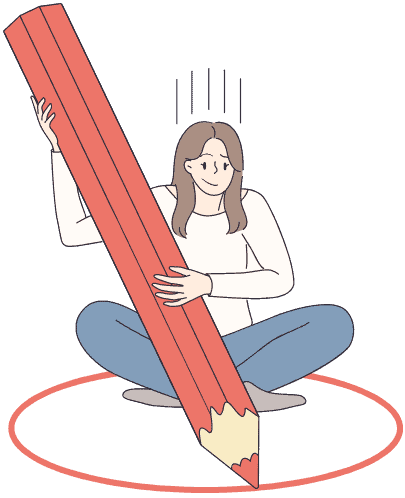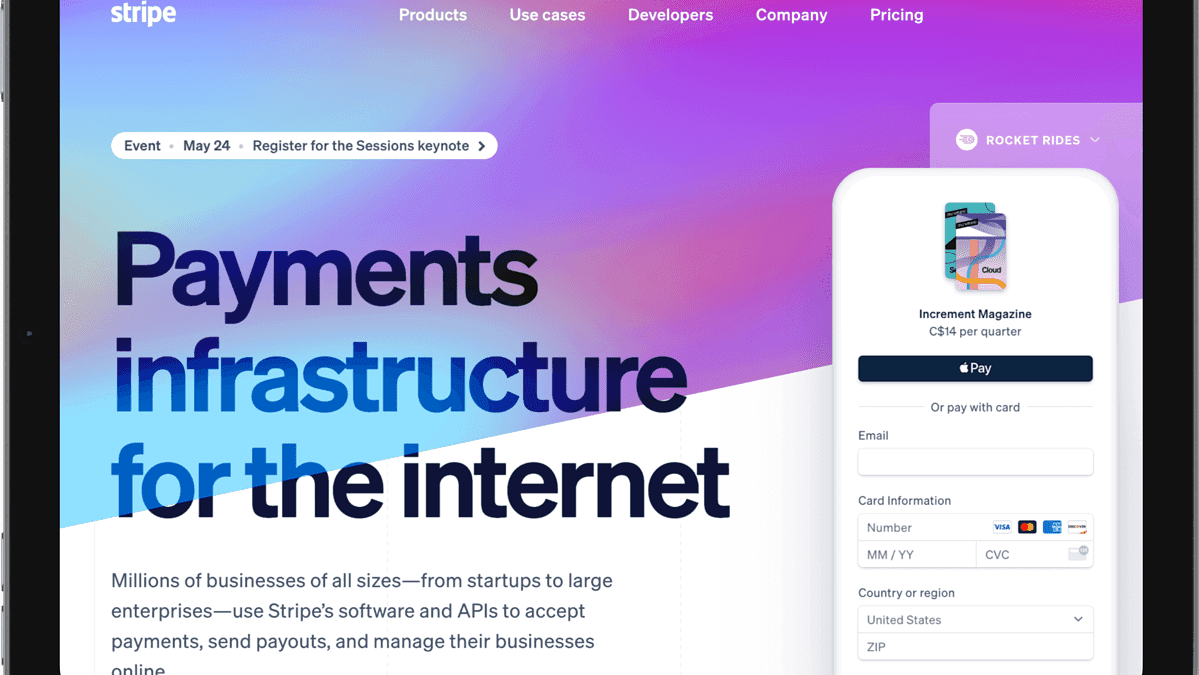Let’s talk about how to grow your web design business online by becoming the go-to expert that people LOVE to recommend.
Story time: when I first started out in my web design business, I tried to be everything to everyone.
As a new web design business owner, I worked on any web design project that came my way. I did design, implementation, and set up my clients’ email campaigns, their analytics tracking, you name it. I had many opportunities to hone my web design skills.
Sometimes this worked out, but often I felt stressed and like I wasn’t being compensated well for the time I was putting into my projects.
Often, my clients didn’t even know the scope of everything I was doing for them.
One day, everything came to a head when I delivered a design that a client HATED.
I was mortified.
I was working really hard and felt like I had done a good job on the design, but I also knew that there were better designers out there.
That’s when I decided to partner with a colleague—she would focus on graphic design, and I would focus on implementation.
I kept my pricing the same, and she priced her design separately, which meant that I was being compensated well for my time and so was she.
This setup worked so well that we got booked solid, and that’s when my web design business reached the six-figure income milestone.
Now let’s get into some of the other mistakes I see people making when they’re running their web design businesses, and how I recommend overcoming them:
#1 Choose a niche:
There are so many people who might want to have you build their new business website. A prospective client could be a:
- coach
- consultant
- real estate agent
- solopreneur
- eCommerce store owner


There are so many potential clients out there that want different things from a web designer that it is wise to have a specific target market or target audience.
You can’t be everything to everyone, so you need to choose a niche.
When you focus on a specific type of client, you can become known as the go-to web designer for that type of business. This might start within your existing network but it will grow from there.
You might think that you can work with all of these types of clients, but it’s important to focus on just one type of client—they’ll be what makes up your business identity. This will be helpful for both you and your clients.
Finding your own web design niche will also help you come up with a specific and solid business plan, identify your business structure, and design an effective marketing strategy.
Your marketing materials will reflect a defined brand and your social media accounts will show off the web design services you offer. It will be easier to do search engine optimization because you will know exactly what keywords to target.
Your professional portfolio or portfolio website will also show off your personal style as a freelance web designer to future clients.
Having a specific style and niche can also help potential clients and small business owners decide whether or not you are the web designer for them. In this way, your business website will seem more user-friendly.
Look for places where potential clients and business owners are already investing to hire web professionals, web developers, and designers (look at where they make money in their business already), such as:
- Online course websites
- Online retail websites
- Membership sites
In order to be successful in web design, you have to become known as an expert in your field. You need to focus on a niche and build a solid foundation of knowledge so that you can offer real value to your clients.
#2 Get clear on your boundaries:
Get clear on what type of work you actually want to do.
Do you excel at design but not so much at coding? Do you prefer to do implementation and setting up systems instead of focusing on the nitty-gritty pixels?
It’s not only okay to draw a line in the sand and say what you will and will not do, but it will also help you focus on work that is in your zone of genius.


The first mistake to avoid is trying to do it all yourself. Partnering with others or building relationships with other pros that you can refer to, is key.
Bonus tip: set expectations about how often you will communicate with your client, what type of feedback you need from them, and when they can expect to see results.
This will help avoid the “I’ll just do it myself” syndrome or the feeling that you are a mind reader.
#3 Create case studies for your portfolio:
People want to see what work you’ve done and for what kinds of businesses, so having a portfolio and case studies on your own website can go a long way.
What if you’re just starting out?
You might want to work on a project or two for a lower cost just to get your feet wet and have something to show. Or you could do your own sample project, to show off your skills. A portfolio is an important part of building a successful web design business brand.


You might want to work on a project or two for a lower cost just to get your feet wet and have something to show. Or you could do your own sample project, to show off your skills. A portfolio is an important part of building a successful web design business brand.
The key when it comes to your portfolio and creating case studies is to focus on what matters most to your ideal people (in your niche).
That might be the functionality of the website: like how fast it loads, how mobile-friendly it is, how visually appealing it is, how it connects with other important systems like an email platform, or how many sales or orders came through the site after it was designed or launched.
Numbers make a big impression, so track them and feature them in your case studies.
#4 Design client onboarding and off-boarding processes:
If I could go back and give myself one piece of advice to make my web design business less stressful and more successful, it would be to have clear onboarding and off-boarding processes for my clients.
Whether you use a project management system like Asana or ClickUp (watch that video here!), or you set up a flow through your email marketing platform or customer relationship management tool…
You need to have a clear set of things you ask your clients for before you can start on your project. It might be a project brief, where you both agree on the scope and goals of the project.


You’ll probably need their logins and things like their logo or fonts if you aren’t creating those from scratch.
Project management software can help you keep track of deadlines, tasks, and files… but it can also be a big help when it comes to communicating with your clients on the progress of their projects.
A content management system (CMS) like WordPress makes it easy for your clients to update their own website after you’ve built it, but you need to set up clear instructions and documentation on how to do that.
Have a clear expectation when it comes to communication: how often you’ll be in touch, when they can expect to see certain things, and *this is important* how many revisions and changes they can ask for.
This ties into offboarding: have a clear next step once the project is done and handed off.


Whether you offer a retainer website maintenance package, you scope out a Phase 2 project, or you recommend they get in touch with someone else for updates… they WILL want updates, and if you’re booking new clients in, you won’t have time to maintain all of your clients’ sites as they complete their projects with you.
Maintenance services can be a great way to create a recurring revenue stream from web design clients, but you need to make sure it’s something you want to do (and are good at doing).
The web is ever-changing, and so are the needs of businesses. As your existing clients’ business grows, their needs will change and they might need another website designer, professional graphic designer, or web developer with a different skill set to help them.
If you’re not comfortable with that, it’s okay to refer them to someone else who can help them—just make sure you have a process for doing that too!
#5 Estimate Your Time and Charge Accordingly:
It’s so easy to give a ballpark figure for a project on a discovery call, only to realize later that this web design project is going to take a lot more time because of extra coding or other complexities.
If new web design clients tell you they want “a simple WordPress website” but they go on to list a dozen complicated things… it’s probably that they want a “clean looking website” that does a lot.
Don’t let prospective clients’ lack of understanding of what’s required make you underestimate the time needed to achieve their goals.
To help you estimate how long a project will take, you can use a formula that multiplies common requests by the time you’ve spent doing these things on past projects.
Then double your estimate.
As humans, we’re just terrible at estimating so we need to give ourselves a buffer to make sure we don’t underbid and get stuck working for free.
#6 Document Along the Way:
Whether or not you realize it, someone will need to maintain client websites… and you can create a hand-off training document to give to your clients.
You might also want to hire an assistant or other junior web designers to help you fulfill retainer packages.
That’s why documenting your processes and how you implement things will help you scale your web design business or agency.
Do it as you go along. Record screen share videos of yourself performing tasks, especially if they are complicated or error-prone.
You’ll be glad you did when the client comes back a year later, or you hire your first assistant and they can take entire aspects of client work off your plate.
P.S. Watch the video on how to hire a virtual assistant linked below.
#7 Master Your Tech Stack:
Learn the tools of the trade that help you achieve your clients’ goals: you don’t have to only work with one specific set of tools, but it helps to have some tools that you know will work in the majority of cases.
For example, your usual tech stack might include WordPress for the website foundation, ActiveCampaign for email marketing, WP Engine for hosting, and AccessAlly for handling payments and course delivery.
And having accounting software can automate your invoicing and payments, so you don’t have to chase people down for money… but it can also help you keep track of what projects are profitable and which ones aren’t worth your time.
Learn more about AccessAlly here and how it can help you design online courses, memberships, and community websites for your clients… exactly the way they want them.
All in all…
Starting a web design business takes time, but if you put in the effort to learn about web design, web and business development, and marketing… you can set your web design business up for success.
By following the steps we’ve outlined here, you’ll be well on your way to becoming the go-to expert that people LOVE to recommend.
And as you become more comfortable with web design and start to get a feel for what your clients really want, you can start expanding the services you offer… and raising your rates!
Do you have any questions about starting or growing your web design business? Let us know in the comments below!




